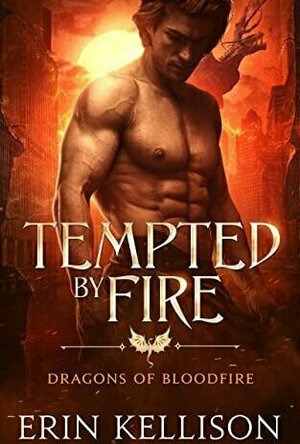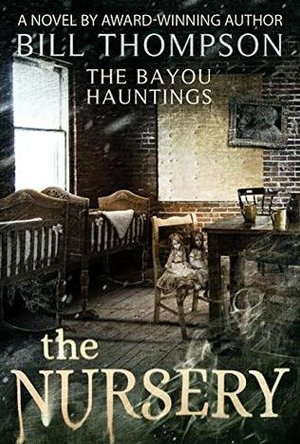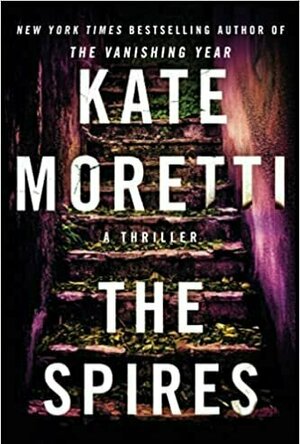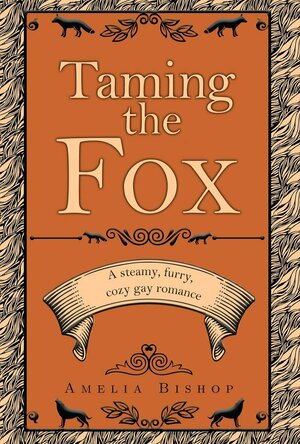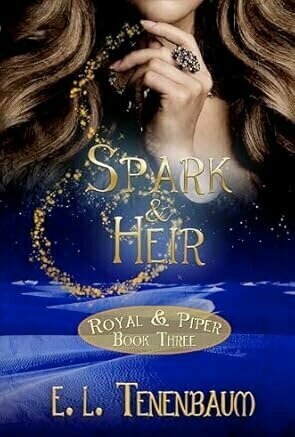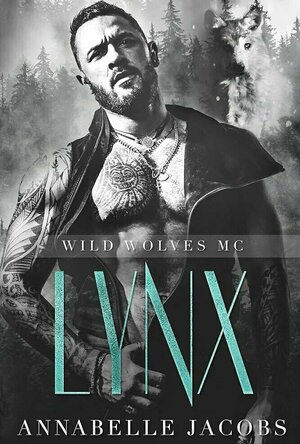Search
Search results
Merissa (13600 KP) rated Tempted By Fire (Dragons of Bloodfire #1) in Books
Apr 14, 2023
This is the first in a new series by Erin Kellison. Her stories are always sharp and to the point, and this one is no different. You will follow Emerson as she tries to understand, work with, and live with the Bloodkin, otherwise known as Dragon shifters. She was one of those 'lost in the system' and indeed, only flagged up as Bloodkin when she applied for financial aid whilst at college. Completely fed up with the misogynistic view that most Bloodkin appear to have, she decides that she will quit and move after the job she is currently working on is finished.
This leads you to Thane, a 600-year-old Dragon who is fighting the pull of the Night Song. He knows that one more shift and he won't be able to return to his human shape. If this takes place outside of Havyn, then death and destruction will rain down on the human world, starting the persecution of dragons once more.
Emerson is strong and feisty and will not take any crap from anyone. Thane is also strong, set in his ways, a wonderful ally and a fearsome foe. Their world will draw you in and keep you intent on turning the pages, one after the other. Some of the other characters deserve a mention, in particular, Matthew. I loved him and his attitude towards Thane. Another one is Bryan, Emerson's foster brother who is also a Wolfkin. I am hoping that he will get his story too.
This is a wonderful story that takes you into the world of shifters, allies, and enemies. I personally loved every moment and am looking forward to Book 2 in this series. Highly recommended.
* A copy of this book was provided to me with no requirements for a review. I voluntarily read this book; the comments here are my honest opinion. *
Merissa
Archaeolibrarian - I Dig Good Books!
Jul 16, 2015
This leads you to Thane, a 600-year-old Dragon who is fighting the pull of the Night Song. He knows that one more shift and he won't be able to return to his human shape. If this takes place outside of Havyn, then death and destruction will rain down on the human world, starting the persecution of dragons once more.
Emerson is strong and feisty and will not take any crap from anyone. Thane is also strong, set in his ways, a wonderful ally and a fearsome foe. Their world will draw you in and keep you intent on turning the pages, one after the other. Some of the other characters deserve a mention, in particular, Matthew. I loved him and his attitude towards Thane. Another one is Bryan, Emerson's foster brother who is also a Wolfkin. I am hoping that he will get his story too.
This is a wonderful story that takes you into the world of shifters, allies, and enemies. I personally loved every moment and am looking forward to Book 2 in this series. Highly recommended.
* A copy of this book was provided to me with no requirements for a review. I voluntarily read this book; the comments here are my honest opinion. *
Merissa
Archaeolibrarian - I Dig Good Books!
Jul 16, 2015
Billie Wichkan (118 KP) rated The Nursery (The Bayou Hauntings #3) in Books
May 22, 2019
A house that sat empty for fifty years as its dead owner instructed. A locked room with no key. A single father with eight-year-old twin girls. A nursery from long, long ago that no child ever played in. There are eerie things going on at The Arbors in St. Francisville, Louisiana. Architect Jordan Blanchard is joined by his friend Callie and Landry Drake to learn the secrets of a domineering matriarch whose two husbands died in bizarre ways. They explore the house as someone watches from a hidden place high above. The Nursery, the third book in the series, will keep you up late at night wondering what’s behind the next door, what lies beyond the mirror and who hides and waits at The Arbors.
The Nursery by Bill Thompson is a book I requested from NetGalley and the review is voluntary.
This is the third book in the series and I wasn’t aware of that when I started this but it did not hamper me one bit in reading this one. The author gives you little bits on the background as you go along so it was very easy to pick up on.
This is not your typical haunted house story. There is a nice ghost and malevolent ghost, hidden bodies, a child’s grave where one did not belong, and travels through a mirror to other dimensions. And that doesn’t even touch the real-life evil that’s stalking the family’s every move. This is a different type of ghost story.
I love the location settings and the whole premise behind this series of paranormal interweaved with the characters lives.
I want to say so much more but I don’t want to give anything away. This book has so much going for it and I am definitely getting the previous books and following this author. This book had me right from the start and I hope there are more to come in this series.
The Nursery by Bill Thompson is a book I requested from NetGalley and the review is voluntary.
This is the third book in the series and I wasn’t aware of that when I started this but it did not hamper me one bit in reading this one. The author gives you little bits on the background as you go along so it was very easy to pick up on.
This is not your typical haunted house story. There is a nice ghost and malevolent ghost, hidden bodies, a child’s grave where one did not belong, and travels through a mirror to other dimensions. And that doesn’t even touch the real-life evil that’s stalking the family’s every move. This is a different type of ghost story.
I love the location settings and the whole premise behind this series of paranormal interweaved with the characters lives.
I want to say so much more but I don’t want to give anything away. This book has so much going for it and I am definitely getting the previous books and following this author. This book had me right from the start and I hope there are more to come in this series.
Heather Cranmer (2721 KP) created a post
Jul 12, 2022
Kristy H (1252 KP) rated The Spires in Books
Oct 28, 2021
Penelope Cox thinks she's put her college years behind her, when, twenty years later, her old friend Willa shows up unexpectedly on her doorstep. Willa Blaine needs help escaping her abusive husband. Penelope hasn't seen Willa since their gap year after college, when they and three other friends lived together in a converted church. Calling themselves "the Spires" they were a close-knit group, until hidden resentments and jealousies tipped over. Focused on their leader, Jack, things started to change when he brought home a girlfriend, Grace. Then tragedy struck and the group went their separate ways. Now, Willa seems the perfect guest, bringing order and happiness to the Cox household. But Penelope feels like her friend is putting her life off-balance and bringing up horrible memories: memories she'd rather leave long buried.
"Six months after they moved in, he brought home Grace and sent them all into a tailspin."
This is slow burn read--it's sluggish to start, but picks up as the story gets moving. Less thriller, more character-driven, THE SPIRES focuses on relationships more than mystery, though there is certainly plenty to figure out as the tale progresses.
The book skips back and forth between the group's gap year after college at The Church House and present day, when Penelope's friend Willa shows up without warning. The two haven't seen each other since they scattered after The Church House tragedy. We know something bad happened at The Church House, but it takes a while (basically the whole book) to get it all figured out. There is a lot of drama and angst as this all happens. None of the characters are particularly likeable, but there are plenty of motives and secrets tossed in along the way.
I didn't find THE SPIRES as thrilling as some of Moretti's other books. Still, it became more interesting and suspenseful as I read, and there are definitely some good twists. This is an especially good read for those who like a good psychological mystery. 3.5 stars.
"Six months after they moved in, he brought home Grace and sent them all into a tailspin."
This is slow burn read--it's sluggish to start, but picks up as the story gets moving. Less thriller, more character-driven, THE SPIRES focuses on relationships more than mystery, though there is certainly plenty to figure out as the tale progresses.
The book skips back and forth between the group's gap year after college at The Church House and present day, when Penelope's friend Willa shows up without warning. The two haven't seen each other since they scattered after The Church House tragedy. We know something bad happened at The Church House, but it takes a while (basically the whole book) to get it all figured out. There is a lot of drama and angst as this all happens. None of the characters are particularly likeable, but there are plenty of motives and secrets tossed in along the way.
I didn't find THE SPIRES as thrilling as some of Moretti's other books. Still, it became more interesting and suspenseful as I read, and there are definitely some good twists. This is an especially good read for those who like a good psychological mystery. 3.5 stars.
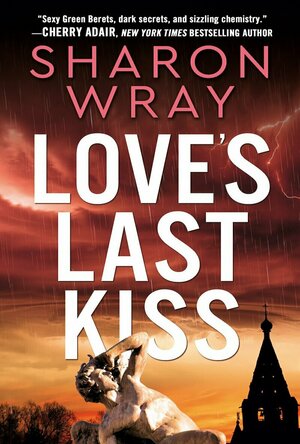
Love’s Last Kiss by Sharon Wray
Book
Is love worth risking everything for? Rose Guthrie, a reluctant erotic dancer, hasn’t trusted...
Adult Romance Suspense
Merissa (13600 KP) rated Taming the Fox in Books
Aug 17, 2023
TAMING THE FOX was originally an erotic short story but has been revised and re-released.
Harlan is a fox shifter, with no family and no clan, as he doesn't want to breed with a vixen. He has his family's cabin and lives alone, only going into town when necessary. Shane is a wolf shifter, from a rather well-to-do family, who visits his mother's old house and decides to live there, for reasons the same as Harlan's. These two meet and a spark of attraction is there immediately but, for 'reasons', Harlan won't do anything.
Now... I loved the premise of this book, and the characters are all great - apart from those that aren't meant to be. It is a long book, with plenty of time for you to sink into the story. BUT it didn't have to be. One of the reasons it is so long is because there is a constant back and forth as Harlan fights his feelings. For me, this went on too long, as it eventually took away from the story and made the impact of his feelings and the situation less than it should have been. After all that, the ending and the epilogue are done in just a couple of pages. Okay, slight exaggeration, but you get the meaning.
The focus of this story was definitely our two MCs, so enjoy what world-building you can. What is there, is done very well. There is angst here, but it is mainly internal by just one of the MCs.
A different story and one I enjoyed. Definitely recommended by me. Take a read for yourself and see what you think.
** same worded review will appear elsewhere **
* A copy of this book was provided to me with no requirements for a review. I voluntarily read this book; the comments here are my honest opinion. *
Merissa
Archaeolibrarian - I Dig Good Books!
Aug 17, 2023
Harlan is a fox shifter, with no family and no clan, as he doesn't want to breed with a vixen. He has his family's cabin and lives alone, only going into town when necessary. Shane is a wolf shifter, from a rather well-to-do family, who visits his mother's old house and decides to live there, for reasons the same as Harlan's. These two meet and a spark of attraction is there immediately but, for 'reasons', Harlan won't do anything.
Now... I loved the premise of this book, and the characters are all great - apart from those that aren't meant to be. It is a long book, with plenty of time for you to sink into the story. BUT it didn't have to be. One of the reasons it is so long is because there is a constant back and forth as Harlan fights his feelings. For me, this went on too long, as it eventually took away from the story and made the impact of his feelings and the situation less than it should have been. After all that, the ending and the epilogue are done in just a couple of pages. Okay, slight exaggeration, but you get the meaning.
The focus of this story was definitely our two MCs, so enjoy what world-building you can. What is there, is done very well. There is angst here, but it is mainly internal by just one of the MCs.
A different story and one I enjoyed. Definitely recommended by me. Take a read for yourself and see what you think.
** same worded review will appear elsewhere **
* A copy of this book was provided to me with no requirements for a review. I voluntarily read this book; the comments here are my honest opinion. *
Merissa
Archaeolibrarian - I Dig Good Books!
Aug 17, 2023
Merissa (13600 KP) rated Spark & Heir (Royal & Piper #3) in Books
Dec 10, 2024
SPARK & HEIR is the final part of this outstanding trilogy, so hold onto your hats because it's non-stop.
Quirin and Cal are with King Eryk, although neither of them knows for sure where or how they fit in. Cal bargains for her kingdom, paying a price she has always known about. Quirin finds himself torn between his old king who made him what he was, and the new queen who had won his loyalty and admiration. I absolutely loved how Quirin talked with Kylen about Cal. Kylen was also a character I grew to love, understated and shy, but with a massive heart for those he cares about.
Still told by three different people, you literally get the inside take on just how twisted and malicious Evalena is. My heart broke at times, not only for a specific character but also for Quirin.
Now, I'm going to be deliberately vague here, but I want to mention something without giving away any details... Quirin is sent away to gather information on what Evalena's doing, while Cal obviously stays behind. During that time, something absolutely necessary happened, but I didn't like it because Quirin wasn't there. After I got over my upset, I realised it was a perfect example of how war doesn't stop just because you're a main character!
The climax and epilogue are outstanding and I was hung on every word. I am sad to see this come to an end, although I still hope for more from this kingdom and for Quirin. A 5-star series and HIGHLY RECOMMENDED by me. Just don't make me choose my favourite book out of the three because I'm stumped!
** same worded review will appear elsewhere **
* A copy of this book was provided to me with no requirements for a review. I voluntarily read this book; the comments here are my honest opinion. *
Merissa
Archaeolibrarian - I Dig Good Books!
Dec 10, 2024
Quirin and Cal are with King Eryk, although neither of them knows for sure where or how they fit in. Cal bargains for her kingdom, paying a price she has always known about. Quirin finds himself torn between his old king who made him what he was, and the new queen who had won his loyalty and admiration. I absolutely loved how Quirin talked with Kylen about Cal. Kylen was also a character I grew to love, understated and shy, but with a massive heart for those he cares about.
Still told by three different people, you literally get the inside take on just how twisted and malicious Evalena is. My heart broke at times, not only for a specific character but also for Quirin.
Now, I'm going to be deliberately vague here, but I want to mention something without giving away any details... Quirin is sent away to gather information on what Evalena's doing, while Cal obviously stays behind. During that time, something absolutely necessary happened, but I didn't like it because Quirin wasn't there. After I got over my upset, I realised it was a perfect example of how war doesn't stop just because you're a main character!
The climax and epilogue are outstanding and I was hung on every word. I am sad to see this come to an end, although I still hope for more from this kingdom and for Quirin. A 5-star series and HIGHLY RECOMMENDED by me. Just don't make me choose my favourite book out of the three because I'm stumped!
** same worded review will appear elsewhere **
* A copy of this book was provided to me with no requirements for a review. I voluntarily read this book; the comments here are my honest opinion. *
Merissa
Archaeolibrarian - I Dig Good Books!
Dec 10, 2024
Merissa (13600 KP) rated Lynx (Wild Wolves MC #1) in Books
Sep 25, 2025
LYNX is the first book in the Wild Wolves MC series, set in the East Midlands, UK, which was my old stomping ground. I can't tell you how happy I was to read something set there, even if it is a fictional place.
Annabelle Jacobs writes brilliant British Urban Fantasy, and this one is no different. In a world where humans don't know about shifters, the pack came together as a group of outcasts and misfits, using the MC as a cover. Morgan is as human as they come, but his life changes in almost unrecognisable ways, starting off with his dad losing their home to gambling. Think of a snowball mixed in with personal choices, and you will see how it gets bigger as it rolls downhill.
I loved the relationship between Lynx and Morgan, and then between the two of them individually and the rest of the pack. This isn't a warm and fuzzy book, but it isn't unnecessary angst either. Everything that is in here is for a reason, and I was completely hooked with every word.
Although the time it is set in is quite fast, I found the pacing to be perfect, giving time with the pack, Morgan, and Lynx in between the action. It was a mix of dark (fight rings), emotional (Lynx and Morgan, Morgan and Luke, etc.), and funny (comments between the pack members), so if that's what you enjoy, I think you will love this.
There are a couple of possible couples that I'm hoping for, together with characters I want to find love, and I honestly can't wait for the next book, no matter who it features. Another fantastic world to lose myself in. Absolutely brilliant and HIGHLY RECOMMENDED by me.
** Same worded review will appear elsewhere. **
* A copy of this book was provided to me with no requirements for a review. I voluntarily read this book; the comments here are my honest opinion. *
Merissa
Archaeolibrarian - I Dig Good Books!
Sep 25, 2025
Annabelle Jacobs writes brilliant British Urban Fantasy, and this one is no different. In a world where humans don't know about shifters, the pack came together as a group of outcasts and misfits, using the MC as a cover. Morgan is as human as they come, but his life changes in almost unrecognisable ways, starting off with his dad losing their home to gambling. Think of a snowball mixed in with personal choices, and you will see how it gets bigger as it rolls downhill.
I loved the relationship between Lynx and Morgan, and then between the two of them individually and the rest of the pack. This isn't a warm and fuzzy book, but it isn't unnecessary angst either. Everything that is in here is for a reason, and I was completely hooked with every word.
Although the time it is set in is quite fast, I found the pacing to be perfect, giving time with the pack, Morgan, and Lynx in between the action. It was a mix of dark (fight rings), emotional (Lynx and Morgan, Morgan and Luke, etc.), and funny (comments between the pack members), so if that's what you enjoy, I think you will love this.
There are a couple of possible couples that I'm hoping for, together with characters I want to find love, and I honestly can't wait for the next book, no matter who it features. Another fantastic world to lose myself in. Absolutely brilliant and HIGHLY RECOMMENDED by me.
** Same worded review will appear elsewhere. **
* A copy of this book was provided to me with no requirements for a review. I voluntarily read this book; the comments here are my honest opinion. *
Merissa
Archaeolibrarian - I Dig Good Books!
Sep 25, 2025

The Forecast Looks Like Reindeer (Part of: Double-Booked for the Holidays)
Book
What happens when two strangers, a shifter omega and a human alpha, are forced to share a room...
MM Paranormal Seasonal Romance
Merissa (13600 KP) rated Resolute (Kinsmen Billionaires #3) in Books
Mar 10, 2025
RESOLUTE is the third book in the Kinsmen Billionaires series but can be read as a standalone.
Vicente is the oldest brother, the one who will take over the family vineyard in Chile, and the only one still single. So his parents add a proviso to him taking over - he must be married too. Vicente's executive assistant has just retired although she has found a replacement in Camila. How they know each other becomes clear as you read on.
Now, the three characters - Vicente, Camila, and Ava - are all brilliant and I enjoyed each of them in my own way. Vicente was the grumpy-pants big-time CEO who just needed someone to be his partner in every sense of the word. Camila was the sunshine who needed someone to stand by her when things got tough. And Ava was just a cutie who sometimes spoke more wisely than any five-year-old I've ever heard. BUT...
I was only 18% in, and the term 'Let's Boogie' was annoying me so much. I know this is a romance between Camila and her boss, but it is so unprofessional, it's crazy. Also, two other things bothered me as I read. The first one was Owen. That massive turnaround and for what? I'm sorry but, for me, that just didn't work. And the second involved Ava. There is a big scene where she isn't sure if Vicente likes her and gives her reasons. He apologises and asks to call her a special name which is then NEVER mentioned again. I will also admit to being baffled by the term 'Wife' being used all the time!
A story of growth, of families, and of choices, this was a quick, short read that I did enjoy and would recommend. 3.5 rounded up.
** same worded review will appear elsewhere **
* A copy of this book was provided to me with no requirements for a review. I voluntarily read this book; the comments here are my honest opinion. *
Merissa
Archaeolibrarian - I Dig Good Books!
Mar 8, 2025
Vicente is the oldest brother, the one who will take over the family vineyard in Chile, and the only one still single. So his parents add a proviso to him taking over - he must be married too. Vicente's executive assistant has just retired although she has found a replacement in Camila. How they know each other becomes clear as you read on.
Now, the three characters - Vicente, Camila, and Ava - are all brilliant and I enjoyed each of them in my own way. Vicente was the grumpy-pants big-time CEO who just needed someone to be his partner in every sense of the word. Camila was the sunshine who needed someone to stand by her when things got tough. And Ava was just a cutie who sometimes spoke more wisely than any five-year-old I've ever heard. BUT...
I was only 18% in, and the term 'Let's Boogie' was annoying me so much. I know this is a romance between Camila and her boss, but it is so unprofessional, it's crazy. Also, two other things bothered me as I read. The first one was Owen. That massive turnaround and for what? I'm sorry but, for me, that just didn't work. And the second involved Ava. There is a big scene where she isn't sure if Vicente likes her and gives her reasons. He apologises and asks to call her a special name which is then NEVER mentioned again. I will also admit to being baffled by the term 'Wife' being used all the time!
A story of growth, of families, and of choices, this was a quick, short read that I did enjoy and would recommend. 3.5 rounded up.
** same worded review will appear elsewhere **
* A copy of this book was provided to me with no requirements for a review. I voluntarily read this book; the comments here are my honest opinion. *
Merissa
Archaeolibrarian - I Dig Good Books!
Mar 8, 2025
